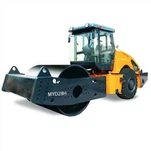Excavators are essential heavy equipment for most construction projects. Excavators, commonly referred to as backhoes, are used for a variety of jobs such as material handling, landscaping, demolition, mining projects, trenching, river dredging, and construction.
The composition of the excavator
The chassis of the excavator consists of boom, bucket and bucket. These parts are attached to a cab that sits on the rotating house. Most excavator cabs can rotate a full 360 degrees for better visibility. Depending on the manufacturer and the nature of the project, excavators can be equipped with tracks or wheels.
Excavators come in a variety of sizes and classes up to 180,000 lbs. Excavators also have many other attachments that can replace the bucket and diversify the machine. An excavator can be used for many different jobs by swapping out the bucket for an auger, drill, ripper or rake.
Choosing the Right Excavator for the Job
The best way to choose the excavator rental you need for your project is to evaluate what exactly you need the machine for. Determining the right excavator size, which attachments are needed, and how long the equipment will take will determine whether you rent or buy an excavator. It is more efficient to rent the right size equipment for a job as needed rather than trying to fit one piece of equipment to every job.
Excavators are commonly used in earthmoving or projects that require a lot of digging. That being said, the variety of attachments available and excavator rental sizes make these excavators useful on excavation projects of all sizes.
Typically, the size and class of excavators fall into the following categories: small, medium, large, demolition, long-reach, and wheeled. There are also specialty excavators made specifically for mining. Which size excavator you choose to buy or rent usually depends on the operating weight of the excavator.
From landscaping projects to the construction of new high-rise skyscrapers, you can see excavators in almost any construction project, especially in the early stages. Variations in size allow them to be used for both large construction projects and small backyard renovations. In addition to the different sizes of excavators, there are several different types of excavators.
What are the Different Types of Excavators?
Cables and hydraulic excavators
The difference between a cable excavator and a hydraulic excavator is the way the parts of the machine move. Cable excavators use a series of wires and cables to move major components and replaced steam shovels in the early 1900s.
Hydraulic excavators work by allowing the operator to control the movement of the hydraulic system using levers to push and move the cylinders that control the excavator's arms and bucket.
6 Excavators
There are seven main types of excavators on the market: crawler excavators, draglines, suction excavators, long-reach excavators, mini excavators, and wheeled excavators.
1. Crawler excavator:
The most commonly recognized excavators for mining, trenching, and landscaping are track-type excavators. Track excavators get their name from the way their tracks travel around a job site. They are very powerful machines with hydraulic power. They are better suited for rough terrain due to the tracks.

2. Dragline excavator:
A dragline excavator is a larger excavator that uses a hoist line and dragline system to remove dirt and soil from underwater projects, pile drivers, or road digging. Because of their weight and awkward shape, they are often shipped to the job site individually in pieces before assembly. These excavators are used on larger job sites and projects.
3. Suction excavator:
Suction excavators use water jets and a high-pressure vacuum to remove dirt, soil and debris. Suction excavators are operated by wheeled vehicles and are used for underground applications, debris removal and other delicate excavation projects.
4. Long arm excavator:
With a boom length of up to 100 feet with attachments, this excavator is ideal for heavy-duty digging, industrial demonstration projects, and goes farther than most other excavators.
5. Small excavator:
Compact mini excavators are compact, smaller versions of track excavators and are ideal for tight job sites, job sites with obstacles, and jobs with fragile terrain such as landscaping. Mini excavators have zero tail capacity and are perfect for small jobs. Mini excavators are also popular for home and DIY landscaping projects.
The size of the project and the size of the load are often the most important factors when choosing between renting an excavator or a mini excavator.
6. Wheeled excavator:
Wheeled excavators are the same as regular excavators, but are mounted on wheels instead of tracks. Wheeled excavators are more popular in Europe and are often used to work in urban areas because their wheels fit better on finished roads and sidewalks than traditional metal tracks.
Mingyang well-known as one of the leading hydraulic excavator suppliers in China, specialized in providing high quality customized products. We warmly welcome you to buy cheap hydraulic excavator for sale here from our factory. Contact us for more details. 20T Mechanical Single Drum Vibratory Road Roller.








